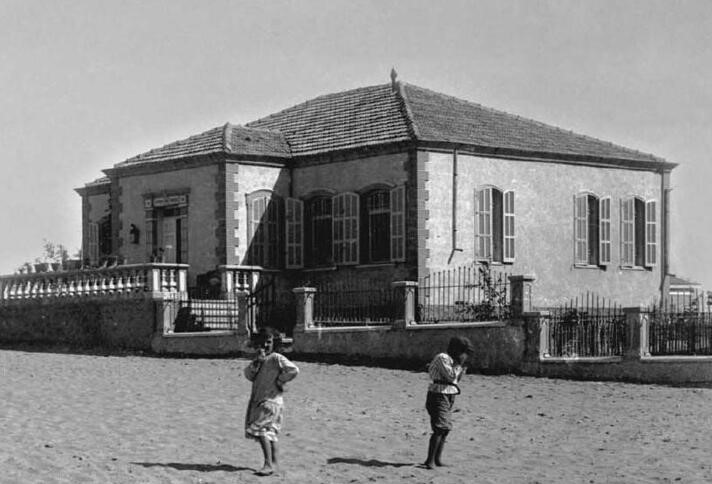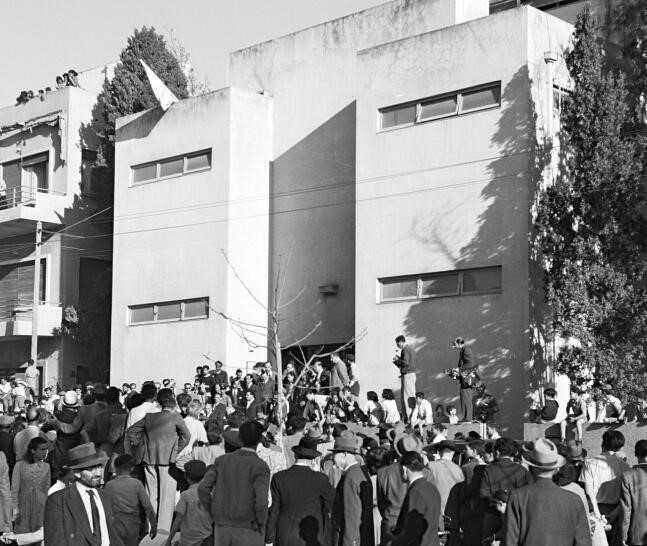The House where the State of Israel was Founded

בית דיזנגוף, השוכן בשדרות רוטשילד 16, הוא אחד מבתים הראשונים שנבנו בתל אביב. הוא היה ביתם של ראש העיר הראשון והמיתולוגי של העיר, מאיר דיזנגוף, ורעייתו צינה. בשנת 1948 הכריז בו דוד בן גוריון על הקמת מדינת ישראל, ומשום כך הוא נקרא גם "בית העצמאות".
Dizengoff, who was one of the founders of the Ahuzat Bait neighborhood from which the city of Tel Aviv grew, headed the neighborhood committee between 1911-1921. When it became a municipal authority in 1921, he was elected to the position of mayor, where he served until 1925 and then from 1928 until his death in 1936.
הבית נבנה בשנת 1910 והכיל במקור קומה אחת. בסוף שנות ה- 20 התווספה לו קומה שנייה שעוצבה בסגנון אקלקטי-מזרחי. הבית שימש לפגישות והתכנסויות של ראשי העיר והיישוב באותה תקופה, והיה בפועל בית העיריה הראשון של תל אביב. בבית נערכו גם קבלות פנים, אירועים שונים וקונצרטים, ובני הזוג דיזנגוף הפכו אותו למקום מפגש חברתי-תרבותי בסגנון "סלון אירופאי".

After his wife Zina passed away in 1930, Dizengoff established an art museum in her memory, purchasing some of the works displayed with his own money. For this purpose, the house was expanded, and the museum was inaugurated in 1932 in the presence of the British High Commissioner. At the same time, the Belgian consulate and a bank also operated there, while Dizengoff himself continued to live on the third floor. Upon his death in 1936, Dizengoff, who was childless, bequeathed the house and museum to the children and residents of Tel Aviv.
הבית המשיך לשמש כמוזיאון לאומנות. ביום שישי ה' באייר תש"ח ה- 14 במאי 1948 התכנסה בו מועצת העם, ובשעה 16:00 הכריז בן גוריון על הקמתה של מדינת ישראל. ההכנות הקדחתניות לטקס החלו רק ממש בסמוך אליו. בימת עץ קטנה הוקמה במהירות באולם הראשי וחלק מהכיסאות הושאלו מבתי קפה קרובים…

בתחילת שנות ה- 70 הועבר מוזיאון תל אביב לאומנות אל משכנו הנוכחי בשדרות שאול המלך. הבית המשיך לשמש כמוזיאון לתנ"ך ועמד מוזנח ושומם יחסית, למרות חשיבותו ההיסטורית הרבה. בשנת 2012 החל הבית לעבור תהליך של שיפוץ ארוך ויסודי כדי להפכו להיכל העצמאות, אשר ינציח את טקס הכרזת המדינה.
(Anecdote authored by: עמיר)
(Number of views: 33)
